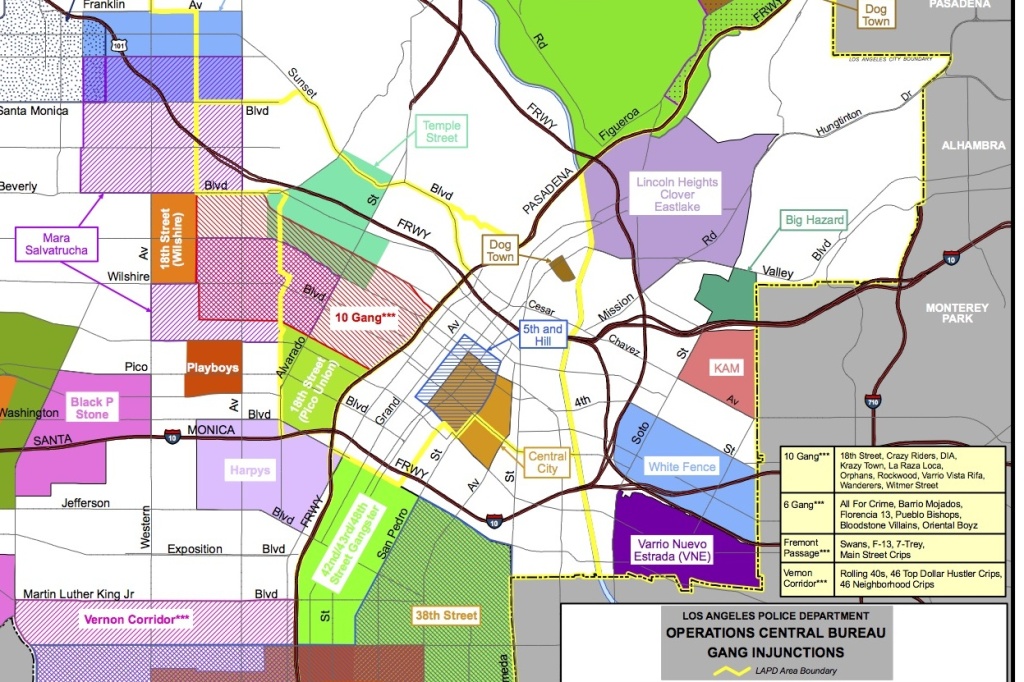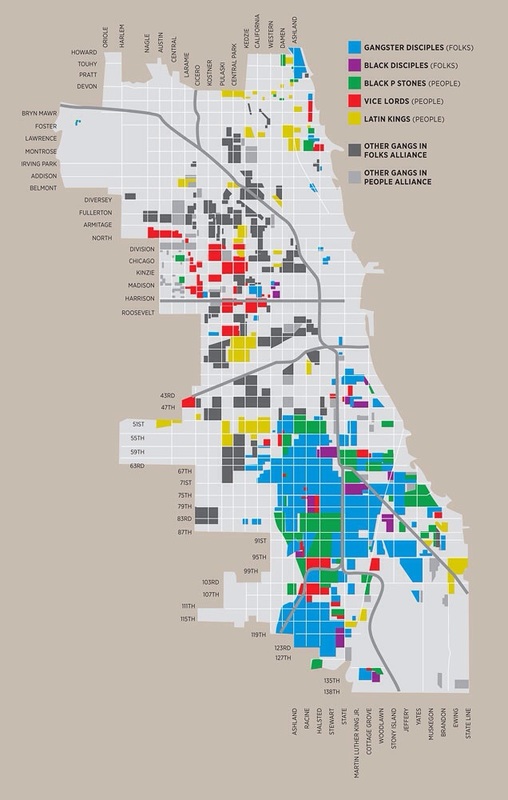Los Angeles is more than just sun, sand, and Hollywood glamour. Beneath its glittering surface lies a complex web of gang territories that have shaped the city's identity for decades. If you’ve ever wondered about the gangs in LA and how their influence impacts daily life, you’re not alone. This article dives deep into the world of the Los Angeles gang map, uncovering the history, key players, and current dynamics that define this urban phenomenon.
Let’s be real for a second—when people think of LA, they picture palm trees, red carpet events, and dream-chasers. But there’s another side to the City of Angels, one that’s been around for generations. Gangs in Los Angeles are not just random groups; they’re deeply rooted in the city’s social fabric, influencing everything from neighborhoods to pop culture.
Our journey today isn’t just about pointing fingers or sensationalizing the issue. It’s about understanding the roots of these gangs, their impact on the community, and what’s being done to address the challenges they bring. So buckle up, because we’re about to explore the intricate world of the LA gang map like never before.
Read also:Unveiling The Secrets Of Ccedilrdquodegaumlcedilshyccediloeligyumlaringfrac14ldquo Your Ultimate Guide
Understanding the Los Angeles Gang Landscape
When we talk about gangs in Los Angeles, it’s important to realize that this isn’t a new phenomenon. The history of gangs in LA stretches back over a century, evolving alongside the city itself. From the early days of neighborhood cliques to the modern-day organized crime syndicates, the gang map of Los Angeles has been constantly shifting.
One of the key factors driving the growth of gangs in LA is socioeconomic inequality. Areas with high poverty rates and limited access to resources often become breeding grounds for gang activity. This isn’t an excuse, but it’s a reality that can’t be ignored. Understanding the root causes is the first step toward finding solutions.
Key Players in the LA Gang Scene
So, who are the main players in the Los Angeles gang map? There are a few names that stand out, each with its own history and influence:
- Bloods: Known for their red colors, the Bloods have been a major force in LA since the 1970s. They’re involved in everything from drug trafficking to territorial disputes.
- Crips: Their blue colors make them instantly recognizable. The Crips are one of the oldest and most infamous gangs in LA, with a presence that extends far beyond the city limits.
- Mexican Mafia (La Eme): Operating behind the scenes, the Mexican Mafia exerts significant influence over many street gangs in Southern California. Their reach goes beyond LA, affecting gang dynamics across the state.
These groups don’t exist in isolation. There’s a complex network of alliances and rivalries that shape the gang map of Los Angeles. Understanding these relationships is crucial for anyone trying to make sense of the city’s underworld.
Breaking Down the Gang Map of Los Angeles
Now, let’s get into the nitty-gritty. The gang map of Los Angeles is a patchwork of territories, each controlled by different groups. Some areas are fiercely contested, while others have been relatively stable for years. Here’s a breakdown of how the map looks today:
Eastside vs. Westside
If you’ve heard the term “Eastside vs. Westside” in the context of LA gangs, it refers to the geographic divide between two major areas of gang activity. The Eastside is traditionally dominated by Hispanic gangs, while the Westside is more associated with African American gangs like the Bloods and Crips.
Read also:Unlocking The Power Of Best Ssh Remoteiot Your Ultimate Guide
This division isn’t just about geography; it’s also about culture and identity. Gangs from each side have their own traditions, symbols, and ways of operating. While there’s plenty of tension between them, there’s also a shared sense of pride in their respective neighborhoods.
Hotspots and Safe Zones
Not all parts of Los Angeles are equally affected by gang activity. Some neighborhoods are considered hotspots, where violence and crime are more prevalent. Others are safe zones, where community efforts have successfully reduced gang influence.
For example, areas like South Central LA and Boyle Heights have historically been gang hotspots. However, thanks to initiatives like the Los Angeles Police Department’s Gang Reduction and Youth Development (GRYD) program, progress is being made. These programs focus on providing alternatives to gang life, such as education and job training, which can make a real difference in the lives of at-risk youth.
The Impact of Gangs on Los Angeles Communities
It’s impossible to talk about the gang map of Los Angeles without addressing the impact these groups have on the communities they inhabit. For many residents, living in a gang-controlled area means dealing with daily threats to their safety and well-being.
But it’s not all doom and gloom. There are countless stories of resilience and hope emerging from these neighborhoods. Community leaders, activists, and everyday citizens are working tirelessly to create positive change. They’re organizing peace marches, mentoring young people, and advocating for policy changes that address the root causes of gang violence.
Statistics That Matter
Let’s talk numbers for a moment. According to a report by the Los Angeles Police Department, there are over 470 active gangs in the city, with an estimated 70,000 members. That’s a staggering figure, but it’s important to note that not all gang members are involved in criminal activity.
Another statistic worth mentioning is the decline in gang-related homicides over the past decade. While this is certainly encouraging, there’s still a long way to go. The goal is to reduce these numbers even further and create safer communities for everyone.
How Technology Is Changing the Gang Landscape
In today’s digital age, gangs in Los Angeles are adapting to new technologies just like everyone else. Social media platforms like Instagram and Snapchat have become powerful tools for recruiting new members and spreading gang culture. At the same time, law enforcement agencies are using advanced data analytics to track gang activity and predict potential conflicts.
One example of this is the LAPD’s Real-Time Crime Center, which uses cutting-edge technology to monitor social media for signs of gang-related activity. By staying one step ahead, police can intervene before violence escalates, potentially saving lives in the process.
Challenges and Opportunities
While technology offers new opportunities for combating gang violence, it also presents challenges. For instance, the anonymity provided by the internet can make it harder to identify gang members and hold them accountable for their actions. Balancing privacy rights with public safety is a delicate issue that requires careful consideration.
On the flip side, technology can also be used to empower communities. Apps and websites that provide real-time updates on gang activity can help residents stay informed and take necessary precautions. It’s all about using these tools responsibly and ethically.
The Role of Education in Preventing Gang Involvement
One of the most effective ways to prevent gang involvement is through education. Schools play a critical role in steering young people away from gangs by providing them with the knowledge and skills they need to succeed in life. Programs that focus on conflict resolution, leadership development, and career readiness can make a big difference.
Additionally, partnerships between schools, local businesses, and community organizations can create pathways to employment and entrepreneurship for at-risk youth. When young people see viable alternatives to gang life, they’re more likely to choose a different path.
Success Stories
There are plenty of success stories out there that prove education works. Take the example of a former gang member who turned his life around through a vocational training program. Today, he runs his own business and serves as a mentor to other young people in his community. Stories like this remind us that change is possible, even in the most challenging circumstances.
Community Initiatives Making a Difference
Across Los Angeles, grassroots initiatives are making a tangible impact on the gang map. These efforts are driven by passionate individuals who refuse to accept the status quo. Whether it’s organizing community clean-up events or hosting cultural festivals, these activities help build bridges between different groups and foster a sense of unity.
One particularly inspiring initiative is the Peace Over Pieces program, which uses art as a tool for healing and transformation. By engaging young people in creative activities, the program helps them express themselves in positive ways and develop a sense of purpose.
How You Can Get Involved
If you’re reading this and feeling inspired to make a difference, there are plenty of ways to get involved. Volunteering your time, donating resources, or simply spreading awareness can all contribute to the cause. Every little bit helps, and together, we can create a brighter future for all residents of Los Angeles.
The Future of the Los Angeles Gang Map
As we look to the future, it’s clear that the gang map of Los Angeles will continue to evolve. While challenges remain, there’s also reason for optimism. The city’s commitment to addressing the root causes of gang violence, combined with the resilience of its communities, gives hope for a better tomorrow.
Of course, there’s no quick fix or one-size-fits-all solution. It will take sustained effort from all stakeholders—government, law enforcement, educators, businesses, and community members—to achieve lasting change. But if there’s one thing we’ve learned from the history of gangs in LA, it’s that change is possible when people come together with a common purpose.
Final Thoughts
So, where does that leave us? The gang map of Los Angeles is a complex and ever-changing landscape, shaped by historical, social, and economic factors. While the challenges are significant, so too are the opportunities for positive change.
We encourage you to share this article with others who might be interested in learning more about this important topic. Together, we can raise awareness and support the efforts of those working to create safer, more inclusive communities in Los Angeles.
Table of Contents
- Understanding the Los Angeles Gang Landscape
- Key Players in the LA Gang Scene
- Breaking Down the Gang Map of Los Angeles
- The Impact of Gangs on Los Angeles Communities
- How Technology Is Changing the Gang Landscape
- The Role of Education in Preventing Gang Involvement
- Community Initiatives Making a Difference
- The Future of the Los Angeles Gang Map
- Statistics That Matter
- Final Thoughts
Thanks for sticking with us through this deep dive into the world of the Los Angeles gang map. We hope you found it informative and thought-provoking. Remember, knowledge is power, and together, we can make a difference!


